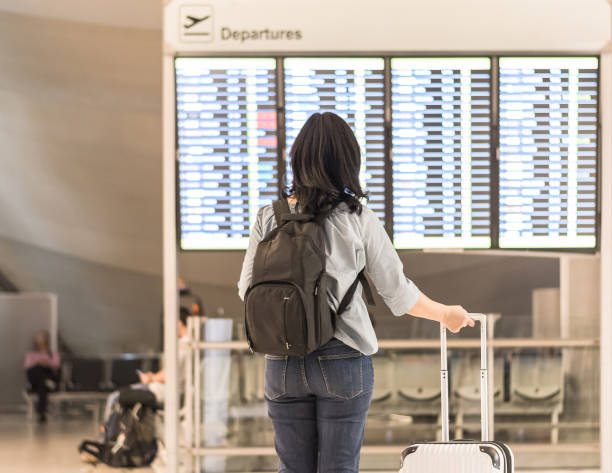THE BEST EXERCISES AND STRETCHES TO DO TO PREVENT DVT WHILST FLYING
Although flying can be very exciting, for some people the thought of sitting in the same position for long periods of time on a flight can be daunting. Sitting still on a plane can cause you to become uncomfortable and stiff and increases the risk of health problems such as deep vein thrombosis (DVT) and backache. Even for the healthiest travelers, it’s important that we stay active on a plane and do regular stretches and exercises, especially on long-haul flights and when in confined spaces.
With help from qualified therapist Lydia Fellows, we’ve put together a guide to some quick and easy stretches you can do during your flight, along with some top tips to avoiding DVT and staying well and healthy during your flights. These exercises are all simple and subtle yet effective, meaning you can do most of them from the comfort of your plane seat.
Stretches
and exercises you can do on a plane
1. Neck
Stretch
This stretch
is aimed at relieving neck tension and any aches and pains from sitting in the
same position for a long period of time.
How to do
a neck stretch
In your airline seat, sit up tall the seat and slowly bend
your neck to the right, until your right ear touches your right shoulder. Hold
this position until a stretch is felt, allowing your left shoulder to drop down
for a deeper stretch. Switch to your left side and repeat.
2. Trunk
Side Bending
Similar to the neck stretch, this is aimed at relieving
tension from being sedentary, but instead of working on the neck, it focuses on
the torso.
How to do
a trunk side bend
Raise the armrests for your seats to give you slightly more
room to stretch. Sit back tall in your seat and cross your arms on your chest.
Focus your eyes on something eye level, for example, the headrest of the seat
in front of you. Slowly bend to one side, whilst keeping your eyes focused on
that spot, and return to the neutral position. Repeat on the other side.
3.
Shoulder and Back Stretch
This stretch requires slightly more room, as well as
something to sit on and something to hold on in front of you. If you can’t find
an ideal and quiet space at the back of the cabin, we recommend raising the
armrest on an aisle seat and sitting facing the aisle across from an empty
seat. It works to relieve tension in your back and shoulders, caused by sitting
in a seat for a long period of time.
How to do
a shoulder and back stretch
Begin in a sitting position, and hold onto a stable object in front of you with one hand, such as the chair in front. Bend at the hips as you lean forward, whilst pushing the hips backwards, being careful not to pull on the chair. If you want to enhance this stretch, reach towards your other side until a stretch is felt. Switch arms and direction stretching and repeat.
4. Seated
Marching
This exercise aims to get blood pumping in the lower limbs
whilst also moving the hips to prevent the risk of swelling and DVT. It can
easily be done at any point during the flight from your seat.
How to do
a seated march
Sit upright in your chair. Whilst keeping you knee bent, lift
your knee up towards your chest. Lower and repeat 10 times with each leg.
Repeat every hour to maximise blood circulation and minimise risk of DVT.
5. Heel Raises
Swelling can drain at the hip, so this movement focuses on
calf movements which, when combined with the seated marching exercise, is a
great preventer of swelling and DVT. Like the seated march, this is done from
the comfort of your seat.
How to do
heel raises
Sit in your chair so that your feet are flat on the floor.
Lift your heels to go on the top of your toes and then lower back to the flat
feet position. Lower and repeat 20 times, at least once an hour.
6. Ankle
Alphabet
Like the other foot and leg exercises, you’ll be able to do
this whilst sitting in your seat. It should be repeated regularly during your
flight, along with the other leg exercises above.
How to do
the ankle alphabet
In the sitting position, lift one foot and trace the letter
‘A’ with your foot, using your big toe to guide. Repeat for each letter of the
alphabet, and then again on the other foot.
7.
Regular walks around the cabin
In addition to these exercises, it’s a good idea to take regular walks around the cabin. Simply getting up and going to the loo, or walking up and down the aisle is a good way to get your body moving. Not only does it help you feel refreshed, but it can help with preventing DVT too.
Other
travel tips:
Did you know that different airlines have different seat
sizes, and you can take advantage of this by booking with an airline with one
of the bigger seats? Although economy is typically smaller than business or
first class, there are some airlines which are generous with seat pitch,
legroom and other provisions. Book on an airline with a wide seat pitch to
allow you more room to stretch out and complete the exercise above. Compare the
sizes of different airlines’ economy seats here.
General
Flight Wellness
There are other simple steps you can take to reduce the risk of DVT for your flight. Make sure you stay hydrated and drink plenty of water, avoiding alcohol and sleeping pills. You should also consult your doctor if you have a history of DVT, pulmonary embolism or strokes, who may be able to prescribe medication or flight compression socks. Check out our advice on staying well and healthy on flights here.
Choose a flightlayaway Seat
Did you know that you can book a seat on your flight with Flightlayaway?
Make sure you book wisely, and opt for an aisle seat if you wish to stretch out
mid-flight. This will allow you to use the space in the aisle to extend your
legs and arms. In addition, if you want to get up and walk around during the
flight, an aisle seat will allow you to do this much more easily.






Comments
Post a Comment